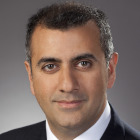Global pharmaceuticals are part of a mega trend that is not sensitive to the global economy or the slow-down in China.
Regulators are approving new drugs at record rates as global pharmaceutical companies respond to the effect of population ageing on healthcare systems.
In 2014, the US Food and Drug Administration approved 50 new drugs composed from 30 new molecular entities and 20 new biological ones, one of the highest numbers of approvals in 20 years.
A recent example of the potential of these new breakthrough drugs is in the treatment of Hepatitis C, where a cure has been found.
Nasdaq-listed US biotechnology company Gilead Sciences has developed drugs that are leading the way in all-oral treatments in the fast-growing Hepatitis C market.
The company’s two key Hepatitis C drugs each generated revenue exceeding $US2 billion within three months of launch, and its first HCV drug generated sales of more than $US10 billion after the first 12 months.
The HCV affects an estimated 3.2 million people in the US and 150-180 million worldwide, and can lead to a number of serious liver complications and death.
The effect of population ageing – also referred to as the silver economy or silver tsunami – is an international phenomenon. In 1950, just 8 per cent of the world's population was aged 60 or over.
By 2005 that proportion had risen to 10 per cent and it is expected to more than double over the next 40 years, reaching 22 per cent in 2050.
Globally, the number of people aged 60 and over will nearly triple in size, increasing from 894 million in 2010 to 2.43 billion in 2050.
This ageing population will have a major impact on global healthcare systems. According to consultants Deloitte, it will lead to huge increases in chronic diseases such as heart disease, stroke, cancer, chronic respiratory diseases, diabetes and mental illness.
These diseases are the leading global cause of mortality, representing 63 per cent of all deaths, and can be attributed to the ageing population, more sedentary lifestyles, diet changes and rising obesity levels, as well as improved diagnostics.
In response to this trend, regulators are approving new drugs at record rates, while the review times for new drugs that are saving lives are at historically short levels.
This trend is providing a significant boost for the pharmaceutical sector, where the pipeline of drugs is generating a strong tailwind leading to billions of dollars in revenue.
While Australians can invest in some excellent local healthcare companies, there are limitations.
For instance, these tend to be either single or narrow product device companies, which can place them at a higher risk from product recalls.
Some companies are principally connected to the Australian healthcare sector, such as radiology, pathology and hospital-based companies, exposing them to risks from changing funding structures and regulations.
By diversifying their domestic portfolios into areas which are not available in Australia, such as oncology, diabetes and orthopaedics, investors can benefit from the growing impact of the silver economy on healthcare systems.
Monik Kotecha is the chief investment officer of Insync Funds Management.






